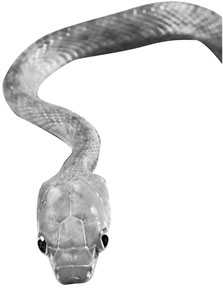Drug-filled mice airdropped over Guam to kill snakes
Ker Than
Dead mice packed with drugs were recently airdropped into Guam’s
dense jungle canopy—part of a new effort to kill an invasive species of
snake on the U.S. Pacific island territory.
In the U.S. government-funded project, tablets of concentrated
acetaminophen, the active ingredient in Tylenol, are placed in dead
thumb-size mice, which are then used as bait for brown tree snakes.
In humans, acetaminophen helps soothe aches, pains, and fevers. But
when ingested by brown tree snakes, the drug disrupts the
oxygen-carrying ability of the snakes’ haemoglobin blood proteins.
 “They go into a coma, and then death,” said Peter Savarie, a
researcher with the U.S. Department of Agriculture (USDA) Wildlife
Services, which has been developing the technique since 1995 through
grants from the U.S. Departments of Defense and Interior. “They go into a coma, and then death,” said Peter Savarie, a
researcher with the U.S. Department of Agriculture (USDA) Wildlife
Services, which has been developing the technique since 1995 through
grants from the U.S. Departments of Defense and Interior.
Only about 80 milligrams of acetaminophen equal to a child’s dose of
Tylenol are needed to kill an adult brown tree snake. Once ingested via
a dead mouse, it typically takes about 60 hours for the drug to kill a
snake. “There are very few snakes that will consume something that they
haven’t killed themselves,” added Dan Vice, assistant state director of
USDA Wildlife Services in Hawaii, Guam, and the Pacific Islands. But
brown tree snakes will scavenge as well as hunt, he said, and that’s the
“chink in the brown tree snake’s armour.”
The brown tree snake is an arboreal species native to Australia,
Papua New Guinea, and several Pacific islands. The snake preys on birds,
lizards, bats, and small mammals.
Inadvertently introduced to Guam (map) from the Solomon Islands after
World War II, brown tree snakes are responsible for the extinction or
severe reduction of several of the island’s native species.
The brown tree snake “is a nocturnal, arboreal predator. There’s just
nothing like it here. It arrived here and found an island full of very
naïve native wildlife,” Vice said. Over the years, scientists have
developed several strategies to fight the reptile pest, including traps,
snake-detecting dogs, and nighttime spotlight searches along airport and
seaport fence lines.
Most of these strategies have focused on keeping the snake species
from leaving Guam and sneaking onto ships headed for other islands, such
as Hawaii, where scientists fear the predators could wreak similar
havoc. By contrast, this latest approach aims to take the fight into
Guam’s jungles, where most of the invasive snakes reside.
National Geographic News
|



